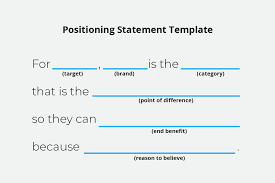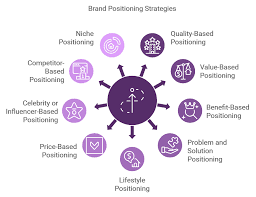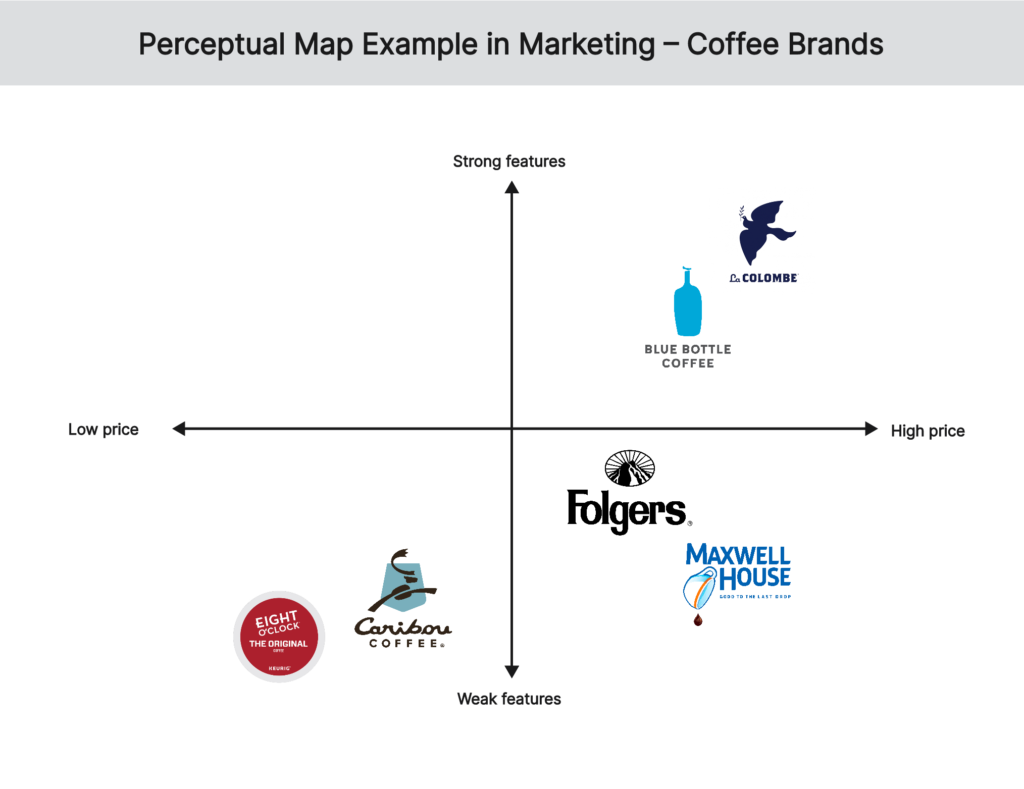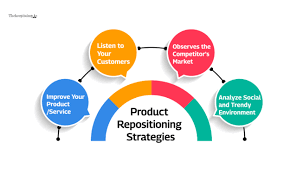Introduction to Positioning
Positioning in marketing is the process of establishing a distinct image, identity, or perception for a product, service, or brand in the target audience’s minds. It answers a fundamental question: “What makes your brand different, and why should customers choose you over the competition?”
This concept goes beyond just creating awareness—shaping how people think and feel about your brand. When done effectively, it helps a business:
- Stand out in a crowded marketplace
- Communicate unique value
- Foster customer loyalty
- Drive decision-making in its favor
The Origins of Positioning
The concept of positioning was popularized by marketing strategists Al Ries and Jack Trout in their groundbreaking book “Positioning: The Battle for Your Mind“ (1981). They emphasized that positioning is not about what you do to the product but what you do to the prospect’s mind.
The Core Components of Positioning
Effective positioning relies on the following elements:
- Target Audience: Identify the specific group of people you aim to serve.
- Competitive Analysis: Understanding your competitors’ strengths and weaknesses to find your unique space.
- Value Proposition: Defining the unique benefits and solutions your product or service offers.
- Messaging: Crafting consistent and compelling messages that reinforce your brand’s position.
Examples of Positioning in Action
- Volvo positions itself as the safest car brand.
- Apple emphasizes innovation and premium design.
- Nike inspires through the spirit of athleticism and a “Just Do It” mentality.
- Coca-Cola connects with happiness and shared moments.
Why Positioning Matters
In today’s oversaturated markets, consumers face countless choices. It ensures your brand:
- Resonates emotionally and rationally with customers.
- Stays memorable, even in competitive industries.
- Drives long-term success by aligning with customer expectations and needs.
It is more than just marketing jargon—it’s the foundation for creating a sustainable, impactful brand. By carefully crafting how your brand is perceived, you can achieve a competitive edge, win customer trust, and build lasting connections in a noisy, fast-paced market.

What is a Positioning Statement?
A positioning statement is a concise declaration that articulates how a product, service, or brand fulfills a specific need for a target audience and stands out from competitors. It serves as the foundation for all marketing and branding efforts, ensuring consistency in messaging and strategy.
Key Components of a Positioning Statement
An effective positioning statement typically includes the following elements:
- Target Audience: The specific group of people the product or service is designed for.
- Market Definition: The category or industry in which the brand competes.
- Value Proposition: The primary benefit or solution the brand offers to its customers.
- Differentiation: What makes the brand unique compared to competitors?
Formula for a Positioning Statement
Here’s a widely used template:
For [target audience], [brand/product name] is the [category/market] that [key benefit/value proposition] because [reason to believe].

Example Positioning Statements
- Nike: For athletes and fitness enthusiasts, Nike is the sportswear brand that inspires and equips you to achieve your potential because of its innovative designs and commitment to performance.
- Tesla: For environmentally conscious consumers and tech enthusiasts, Tesla is the electric vehicle manufacturer that delivers cutting-edge technology and sustainable solutions because of its commitment to innovation and clean energy.
- Starbucks: For coffee lovers seeking a premium experience, Starbucks is the café chain that offers high-quality beverages and a welcoming environment because of its dedication to sourcing ethical products and creating a community feel.
Why a Positioning Statement Matters
- Provides clarity: Ensures everyone in the organization understands the brand’s core purpose.
- Drives consistency: Aligns all marketing, branding, and communication efforts.
- Enhances focus: Helps in making strategic decisions that resonate with the target audience.
Crafting Your Positioning Statement
If you’re developing a positioning statement, ask these questions:
- Who are your ideal customers?
- What problem does your product solve?
- What makes your brand better or different from competitors?
- Why should people trust and believe in your offering?

Types of Positioning
Within the realm of business, a variety of strategies are at a company’s disposal to set its products or brands apart in the market. These strategies are aimed at different facets of the product, the intended audience, or the competitive milieu. Presented here are several prevalent methods of positioning in the realm of marketing:
1. Attribute-Centric Positioning
This method underscores a specific attribute or feature of the product that differentiates it from rivals. It spotlights an exceptional characteristic, such as being the swiftest, most durable, or most environmentally conscious product in its category.
2. Price-Driven Positioning
This strategy situates the product as the most economical choice within its category. It appeals to budget-conscious consumers and accentuates the product’s cost-effectiveness.
3. Quality or Opulence Positioning
In this approach, the product is positioned as the pinnacle of quality or a symbol of opulence, often correlating with a premium price point. It accentuates superior craftsmanship, premier materials, or extraordinary performance.
4. Benefit- or Solution-Oriented Positioning
This form of positioning centers on the distinct benefits or solutions the product extends to consumers. It addresses a specific issue or requirement, positioning the product as the ultimate solution.
5. Usage or Application-Oriented Positioning
This tactic emphasizes how the product can be employed or applied in a unique or versatile manner. It focuses on the diverse use scenarios or applications of the product.
6. Competitor-Driven Positioning
This approach juxtaposes the product directly against a competitor, highlighting the aspects where it outshines the competition. It’s commonly utilized when a company intends to challenge a market leader.
7. User-Targeted Positioning
This method focuses on a particular group of users or customers and portrays the product as tailored to their needs and inclinations. This targeting could be based on demographics, lifestyle, or specific customer segments.
8. Cultural or Ethical Alignment Positioning
This form of positioning aligns the product with a particular culture, value, or ethical stance. It resonates with customers who share these values.
9. Niche-Focused Positioning
Niche positioning targets a compact, specialized segment of the market. It concentrates on addressing the unique requirements and preferences of this niche, frequently enabling the company to dominate that specific segment.
10. Problem-Resolution Positioning
Analogous to benefit positioning, this strategy spotlights the product’s ability to solve a specific issue for the consumer. It underscores the product’s capacity to alleviate pain points or challenges.
11. Experience-Centric Positioning
This strategy positions the product based on the holistic experience it delivers to consumers. It centers on creating a memorable and gratifying encounter that extends beyond mere functional advantages.
12. Time-Centric Positioning
This method situates the product based on temporal factors, such as delivery speed, convenience, or time-saving capabilities.
Each positioning strategy carries its own distinct merits and is apt for varied scenarios or objectives. The selection of a positioning approach hinges on factors such as the product’s attributes, the target audience, the competitive landscape, and the overarching marketing strategy of the enterprise.

Positioning Marketing Strategy
Positioning in marketing is a strategic approach used to create a distinct and favorable perception of a product, brand, or company in the minds of consumers. A positioning marketing strategy involves several steps and considerations to effectively differentiate your offering and resonate with your target audience. Here’s a structured approach to developing a positioning marketing strategy:
1. Market Analysis
Understand the market landscape, including your competitors, customers, and overall industry trends. Determine the needs, preferences, and pain areas of your target audience.
2. Define the Unique Selling Proposition (USP)
Determine what sets your product or brand apart from competitors. Identify a specific feature, benefit, or attribute that makes your offering unique and valuable.
3. Segmentation
If applicable, segment your market based on relevant criteria such as demographics, psychographics, or behavior. Tailor your positioning to each segment if you have distinct target audiences.
4. Value Proposition
Develop a clear and compelling value proposition that communicates the unique value and benefits your offering provides to customers. Address the specific problems your product solves or the desires it fulfills.
5. Market Positioning Statement
Create a concise and impactful positioning statement that captures the essence of your positioning strategy. It should include the target audience, the USP, and the value proposition.
6. Competitive Analysis
Understand how your competitors position themselves in the market. Identify gaps or opportunities where your positioning can stand out and appeal to customers.
7. Messaging and Communication
Craft consistent messaging that aligns with your positioning. This message should be used in all marketing materials, including advertisements, website content, social media, and more.
8. Visual Identity
Develop a visual identity that supports your positioning. This includes your logo, color scheme, design elements, and overall brand identity.
9. Consistency and Monitoring
Ensure consistency in delivering the positioning message across all customer touchpoints. Continuously monitor customer perceptions, market trends, and competitor activities. Be prepared to adjust your positioning if needed.
10. Long-term Perspective
It is a long-term strategy. It’s essential to maintain your chosen position over time, even as market conditions evolve. Consistency and commitment to your positioning strategy are key to building a strong brand.
11. Adaptability
Be willing to adapt your positioning strategy if market dynamics change, customer preferences evolve, or new opportunities arise.
Remember that positioning is not pretty much what you assert; it’s approximately the general notion you create inside the minds of your clients. A well-crafted positioning marketing method will help you differentiate your offering, resonate with your target market, and create a strong and lasting marketplace presence.
Remember that positioning is not pretty much what you assert; it’s approximately the general notion you create inside the minds of your clients. A well-crafted positioning marketing method will help you differentiate your offering, resonate with your target market, and create a strong and lasting marketplace presence.

Perpetual Map in Market Positioning
A perceptual map, also known as a positioning map or brand map, is a visual representation used in market positioning to display the relative positions of competing products or brands in the minds of consumers. This tool helps businesses understand how their target audience perceives different offerings in the market and identifies strategic opportunities for differentiation.
Here’s how a perceptual map works in market positioning:
1. Identifying Key Attributes
Determine the key attributes or factors that are essential to your target audience when evaluating products or brands in your industry. These attributes could be price, quality, features, convenience, customer service, or any other factors that influence purchasing decisions.
2. Data Collection
Collect data from market research, surveys, or customer feedback to assess how consumers perceive each product or brand based on the identified attributes. This data will be used to plot the positions on the map.
3. Creating the Map
Create a two-dimensional graph where each axis represents a different attribute. Place the various products or brands on the map based on how consumers perceive them concerning these attributes. The closer a product is to an attribute, the stronger its association with that attribute.
4. Interpretation
Analyze the perceptual map to gain insights into the competitive landscape. Identify areas where your competitors are clustered, and look for gaps or opportunities where your product could be positioned uniquely.
5. Positioning Strategy
Use the perceptual map to formulate your positioning strategy. Decide where you want your product or brand to be positioned with the competition. This positioning should align with your target audience’s preferences and the unique value proposition you aim to deliver.
6. Messaging and Differentiation
Tailor your marketing messaging to highlight the specific attributes that define your desired position on the perceptual map. Emphasize how your product stands out and addresses the needs or desires of your target audience.
7. Monitoring and Adaptation
Continuously monitor changes in consumer perceptions and market dynamics. The perceptual map can help you identify shifts in positioning or new competitors entering the market. Be ready to adapt your positioning strategy when needed.
The Perceptual Map serves as a valuable visual tool that helps businesses make informed decisions about their market positioning strategy. It provides a clear understanding of where their offering stands in the eyes of customers, identify areas for improvement or differentiation, and guides effective messaging to enhance the desired perception in the market.

Repositioning in Marketing
Repositioning in advertising is a strategic system that includes changing the way a product, brand, or agency is perceived by its target market. This is done to adapt to shifts in market situations, respond to competitive challenges, cope with changing consumer options, or revitalize the brand’s image. Repositioning may be an effective device to breathe new life right into a product, reach new customer segments, or regain lost marketplace percentage. Here are the key factors in repositioning:
1. Reasons for Repositioning
Repositioning can be brought on by way of different factors, including adjustments in purchaser needs, technological improvements, competitive pressures, declining sales, brand dilution, or the preference to enter new markets.
2. Market Research
Thorough market research is essential before repositioning. This includes understanding current customer perceptions, identifying gaps in the market, analyzing competitors’ positions, and uncovering opportunities for differentiation.
3. Identifying New Positioning
Based on the research, a new positioning strategy is developed. This could involve highlighting different product attributes, targeting a new audience, emphasizing a unique value proposition, or changing the brand’s image.
4. Messaging and Communication
Craft clear and consistent messaging that communicates the new positioning to the target audience. This messaging should address how the repositioned offering meets customer needs and stands out from competitors.
5. Branding and Visual Identity
If the repositioning involves a significant shift, the branding and visual identity may need to be updated to reflect the new positioning. This ensures that the brand’s appearance aligns with the updated message.
6. Rollout and Implementation
Launch the repositioned product or brand with a carefully planned marketing campaign. This campaign should emphasize the new positioning and reach the target audience through various channels.
7. Customer Education
If the repositioning involves a significant departure from the previous image, it’s crucial to educate existing customers about the changes. Explain the reasons behind the repositioning and how it benefits them.
8. Feedback and Adaptation
Monitor customer feedback and market response to the repositioning. Be prepared to make adjustments, if necessary, based on customer reactions or new market developments.
9. Long-Term Commitment
Repositioning isn’t a one-time effort; it requires a protracted time commitment. Consistency in messaging, transport, and purchaser experience is crucial to solidifying the new position in the marketplace.
10. Measure Success
Establish metrics to measure the achievement of the repositioning efforts. This should include changes in brand notion, purchaser acquisition, income growth, market proportion, or other applicable indicators.
Repositioning may be a strategic move to cope with challenges and capture new opportunities inside the market. When achieved well, it is able to rejuvenate a brand, open up new customer segments, and increase its relevance and competitiveness.

Conclusion on Positioning in Marketing
Positioning in marketing is a powerful tool that defines how a brand or product is perceived in the minds of its target audience. It goes beyond creating visibility; it establishes a meaningful and unique connection that influences consumer preferences and decision-making.
Effective positioning requires:
- A deep understanding of the target market, including their needs, desires, and pain points.
- A clear differentiation strategy that highlights what sets a brand apart from competitors.
- Consistent messaging to reinforce the brand’s identity and value proposition.
When successfully implemented, positioning can:
- Drive customer loyalty by aligning the brand with customer expectations and aspirations.
- Foster competitive advantage in crowded markets.
- Build a strong, recognizable brand identity that remains relevant over time.
In today’s dynamic and saturated marketplaces, the importance of positioning cannot be overstated. Brands that fail to define their position risk being lost in the noise, while those that excel in positioning become leaders in their industries.
Ultimately, positioning is not a one-time activity but a continuous process of adapting to market trends, consumer behavior, and competitive landscapes. Businesses that prioritize and refine their positioning strategies will thrive, creating lasting value for both their customers and their organizations.



